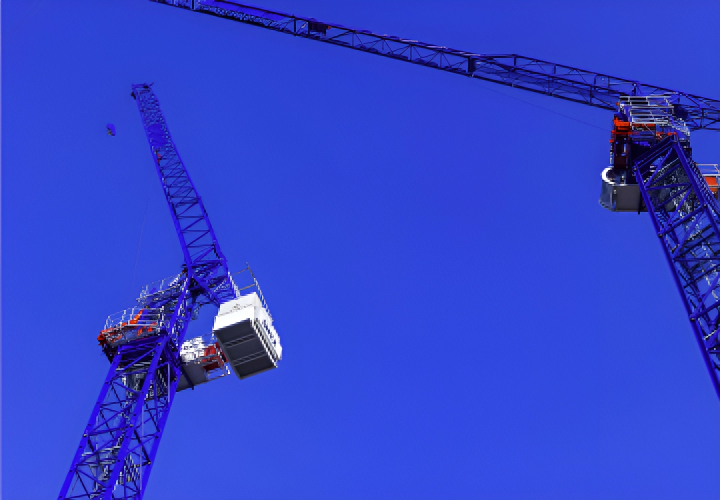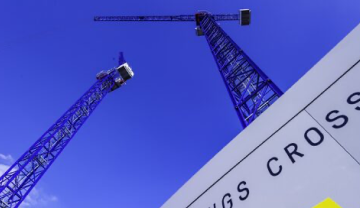
When looking to hire a crane there’s a multitude of options, but at Tower Cranes UK we have the two most popular types available for hire, the saddle crane and the Luffing crane. Each crane comes with different heights, capacity and power and are suitable for different types of projects. It’s important to understand the pros and cons of each type of crane and to identify which crane would be best suited to your project
There can be several things to consider when looking to hire a crane, for example, under English law a landowner owns the airspace above their land and therefore it is illegal for a developer or contractor to allow a crane jib to swing across air space owned by other parties. Due to this, it’s important to understand the landscape that you will be operating within before choosing a crane to hire.
We at Tower Cranes UK have over 20 years’ experience in the industry and have in-depth knowledge to help you pick the right choice of crane. Below we explore the types of cranes that we have available to hire in more detail.
Saddle cranes
Saddle cranes are heavy duty cranes with a counterbalance which gives it a Tshaped appearance. They have a central mast and a horizontal jib which extends out and is utilised as the lifting arm. Saddle cranes will have the cab situated on top of the mast which enables the operator to have the best possible views of the construction site while materials are being lifted and moved.
Saddle cranes offer many benefits and can be the ideal crane solution for your project. These types of cranes are commonly cheaper to hire than the luffing crane and are easier to erect and dismantle as well as being typically quicker to operate.
It’s important to note that tower cranes can sail over neighbouring properties and therefore you may need to obtain permission to do this. This can result in expensive costs. However, we do specialise in helping you with your over sail applications and we’d be happy to discuss this with you.
Take a look at our range of saddle cranes for hire.
Luffing cranes
Luffing cranes, also known as luffing-jib cranes, are called this because of the way that the crane can be raised and lowered, a motion known as ‘luffing’. These types of cranes are extremely adaptable and are typically more expensive to hire than the saddle crane because they can lift heavier loads and reduce the need for an over sail license. Due to this, this type of crane is extremely popular as they are suitable for a wide range of construction sites.
Luffing cranes are typically used to solve a lot of inner-city construction problems or construction sites that have very limited space. Due to the luffing cranes intuitive design, it has the ability to lift heavy weights while standing vertically in the air. One of the major benefits of this is that it solves the issue of requiring over sailing rights which can be notoriously difficult to obtain in many cities. The luffing crane enables the jib and the load to keep within the construction site area at all times and therefore negates the need for heavy loads to be brought over any neighbouring buildings. To ensure your crane doesn’t over sail any buildings, luffing cranes can be fitted with zoning devices which electronically restrict the crane from over sailing any buildings (this can be a mandatory requirement when operating next to key infrastructure such as railway lines).
We have a wide range of luffing cranes that you can hire. Get in touch to get your free quote.
How to hire a saddle or luffing crane
Our service doesn’t stop with the hiring of the crane, we can work with local authorities and assist with submissions of planning for road closures and over sail applications. Have a look at our full list of offered services.
Tower Cranes UK specialises in crane hire, and we can offer bespoke crane packages to match your needs. This entails choosing the right jib length, mast height, and lifting capacities. Get your free quote here for your chosen crane or get one of our experts to give you a call back by filling out our contact form.
